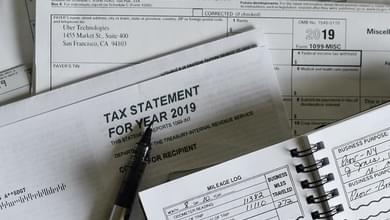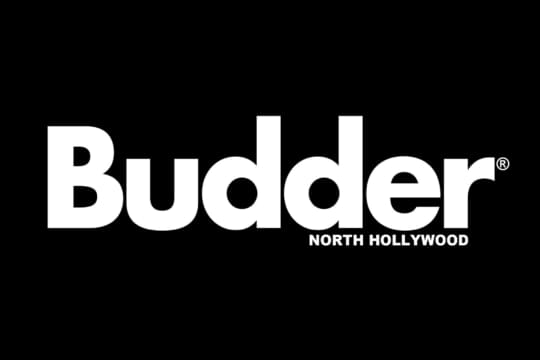
Marijuana Taxes: What Are They & Where Do They Go Exactly?
Published on 9/18/20
The cannabis industry is on fire. With 33 states now offering legal medical weed and 11 with legal recreational access for adults, the amount of cash that is spent on cannabis across the U.S. on a daily basis is staggering. Even amidst the throes of the current pandemic, access to marijuana in states where it is legal is considered to be "essential," and medicinal and recreational stoners alike are flocking to their local dispensaries to stock up on the necessary goods.
Cannabis sales in states that have legalized marijuana for medical and recreational purposes totaled about $14.8 billion in 2019 and are expected to top $48.6 billion by 2025. That's a lot of money. As anyone who has visited a dispensary will know, however, plenty of that revenue is harvested in the form of taxes. That's right. It's not necessarily about the benefits of marijuana and marijuana products for users; it's also about the money.
How Marijuana Taxes Work
The marijuana tax world is complicated. All legal purchases of marijuana are taxed but there are different types of taxes (cultivator, excise, sales) and each state handles how it gets its share of the pot (pun intended) differently. Recreational and medical weed are also usually taxed at separate rates and sometimes medical cannabis is not taxed at all. States can tax the sale between growers and retailers and they also tax consumers when they make their purchase, often at very high rates.
How Cannabis Cultivators Are Taxed

Cannabis cultivators are taxed either by weight or a percentage of the sale of the product. California taxes cultivators based on weight. All fresh flowers must be weighed within two hours of harvesting and growers are charged $9.65 per dry-weight ounce on flower, $2.87 per dry-weight ounce on leaves and $1.35 per ounce on fresh plants. Up in Alaska, mature flowers are taxed at $50 per ounce, immature or "abnormal" bud is $25 per ounce, trim at $15 per ounce and clones at $1 per clone. Maine has also passed legislation that taxes cultivators based on the weight of their product. In Colorado, cultivators must pay a 15% excise tax. This is also the case in Nevada.
How Dispensaries are Taxed
Dispensaries typically pay a fee on every retail transaction based on state codes; medical marijuana tax rates usually differ from recreational. Massachusetts marijuana tax codes state that a 10.75% tax is placed on all retail sales and local taxes on retail transactions may not exceed 3% on top of the state levy. But that's only for the recreational herb. Medical marijuana sales are not taxed at all. Nevada and Colorado hit the dispensaries in their respective states with a 15% tax on their purchases from cultivators. Dispensaries in other states pay the standard business taxes that non-cannabis retail outlets are expected to pay.
What the Customer Pays

The final piece of the tax puzzle comes in the form of how much the consumer has to pay. This takes place in the form of a sales tax at the point of purchase. Again, the amount can vary greatly. Alaskans do not pay anything on top of their purchase price, although the tax noted above on cultivators is usually passed along in the form of higher prices. Nevada takes an additional 10% (medical marijuana users do not have to pay this tax), the Colorado recreational tax percentage is 15% and Oregon, which is well-known for having no general sales tax, has a marijuana sales tax that weighs in at 17%. Michigan currently has a 10% excise tax in addition to a 6% sales tax. Medical cannabis users are exempt from the excise tax.
Illinois is the only state that has a tax on marijuana based on the percentage of THC in the bud. Products with a TCH content of 35% or less are taxed at 10% of the retail price and those with more than 35% are taxed at 25% of the retail price. All marijuana-infused products are taxed at 20% of the retail price. Like booze, the stronger the weed, the more you pay. Thankfully, medical users can avoid this perplexing system and are only required to pay the standard state sales tax of 1%. Washington marijuana taxes are unique in that they are levied entirely after the retail transaction has taken place and come in at a whopping 37% for medical cannabis and 37% plus an additional 8% for recreational weed.
Where Do Marijuana Tax Revenues Go?

It can be frustrating to be highly taxed as you check out at the dispensary. Luckily, many state governments are putting the money right back into the community. Where does Washington State's marijuana tax revenue go, you might ask? Low-income residents get 64% to assist with health care costs, 33% goes into the states' general fund, 8% is used to combat drug and alcohol addiction, 4% is given to towns that have marijuana businesses and 3% is given to the state's Liquor and Cannabis Board and the Department of Health. This is typical of how most states use the revenue garnered from cannabis taxation. Education, social programs and low-income assistance normally see most of the money, but police departments also receive funding intended to combat crime.
Taxes in Recreational Marijuana States:
- Alaska steers 50% of its cannabis revenues to its general fund and 50% to crime reduction programs.
- California uses its cannabis revenues for administrative costs related to legalization, with extra funds going toward economic development, academic studies and youth programs. In the recently released budget for 2020-21, Governor Gavin Newsom acted to steer revenue from cannabis taxation to directly support the fight against COVID-19.
- What does Colorado do with weed money? The state collected an astonishing $302,458,426 in 2019. According to the state's website, the vast majority of it goes to education.
- Michigan's money goes into a general fund that is earmarked for specific projects like roads and schools. Additional tax revenue is returned to communities with dispensaries.
- Oregon utilizes cannabis-related funds to finance education and drug treatment-and-prevention programs.
It is important to remember that although these are meaningful amounts of revenue for states, they still usually represent less than 1% of total state and local tax collections in most of the states that have recreational and/or medical weed. Cannabis taxes are an important source of revenue for states and local communities, but they should not be considered transformative.
How do you feel about marijuana taxes? Have you seen them impact your community? Let us know in the comments below!








